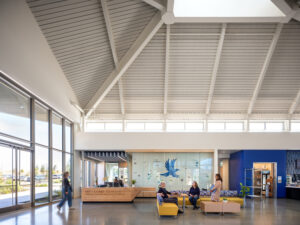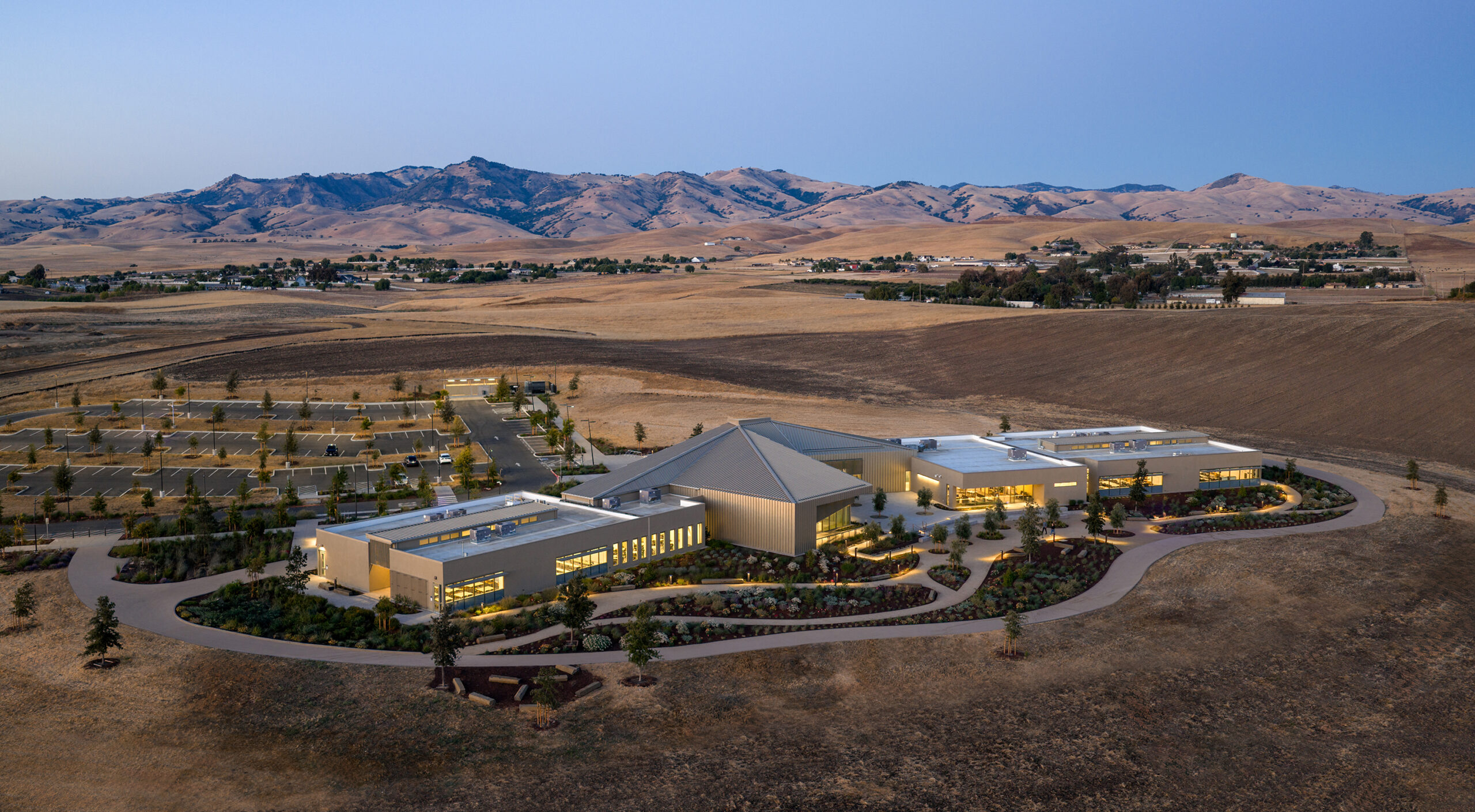Caption: Gavilan College worked with the Volz Group and Steinberg Architects to develop a site master plan. | Photo Credit (all): Jason O’Rear
By Aaron Jobson
In the realm of educational facilities, the design-build project delivery method has gained significant traction due to its efficiency, cost-effectiveness and collaborative nature. This approach, which integrates design and construction services under a single contract, offers a streamlined process with two primary approaches: traditional design-build and progressive design-build. This article will explore the use of design-build project delivery in education projects, comparing the two approaches and looking at successful project examples.
Understanding Design-Build
Design-build is a project delivery method where a single entity, known as the design-build entity (DBE), is responsible for both the design and construction of a project under a single contract. This method contrasts with the traditional design-bid-build approach, where the design and construction phases are separate, and the owner must manage two contracts. The design-build method can offer several advantages, including faster project delivery, reduced costs and improved communication and collaboration among project stakeholders. However, there are important considerations for any school project pursuing this delivery method to ensure it is set up for success.
The Role of Design-Build in Education Projects
Educational institutions are increasingly adopting the design-build method for their construction projects. The reasons for this shift are manifold:
- Efficiency and Speed: The design-build method allows for overlapping design and construction phases, which can significantly reduce the overall project timeline. This is particularly important for educational institutions that often face tight schedules and need to minimize disruptions to the academic calendar.
- Cost Savings and Certainty: By integrating design and construction services, the design-build method can reduce costs associated with project management and coordination. Additionally, the DBE can provide a guaranteed maximum price early in the process, offering greater cost certainty.
- Collaboration and Innovation: The design-build method fosters a collaborative environment where the design and construction teams work together from the project’s inception. This collaboration can lead to innovative solutions that enhance the functionality and sustainability of educational facilities.
Traditional Design-Build Approach

The traditional design-build approach involves selecting a DBE based on a competitive bidding process. The DBE is responsible for both the design and construction phases, and the project is typically delivered under a lump sum or guaranteed maximum price contract. Key features of the traditional design-build approach include:
- Single Point of Responsibility: The owner works with one contract, simplifying communication and accountability.
- Faster Project Delivery: With design and construction phases overlapping, projects often progress more quickly.
- Cost Certainty: The DBE provides a lump sum or guaranteed maximum price early in the process.
- Bridging Documents and RFQ/P: The district or school must engage a separate architecture or program management firm to work with stakeholders to create a preliminary design for the Request for Qualifications (RFQ) and Proposals (P) process, often called bridging documents. This is essential to make sure the DBE scope is clear, and the district receives competitive proposals.
This approach is well-suited for projects with defined scopes, minimal expected changes and a short timeframe for completion. Some of the challenges can be the time required to create bridging documents and conduct the RFQ/P process, as well as potential changes in design and approach from the bridging documents to the DBE team. It should also be noted that the district gives up a certain amount of control over the details of the final design to the DBE to stay within the contracted guaranteed maximum price.
Progressive Design-Build Approach
The progressive design-build approach builds on the principles of traditional design-build but offers greater flexibility during the early stages of a project. In progressive design-build, the owner selects a DBE based on qualifications rather than cost and collaborates closely during the design phase before finalizing the price and construction details. Key features of the progressive design-build approach include:
- Two-Phase Process: The project is developed in two stages: pre-construction (collaborative planning and design) and construction.
- Owner Involvement: Owners actively participate in design decisions, ensuring alignment with project goals.
- Flexibility: This approach allows adjustments to scope, budget and schedule as the design progresses and includes significant community engagement during the process.
- Streamlined Selection Process: Because the DBE does not provide a guaranteed maximum price at selection, a combined RFQ/P process can be used, and separate bridging documents are not required.
The progressive design-build approach is ideal for complex projects with evolving or uncertain budget, scope and design requirements. It is particularly beneficial for educational institutions that need to accommodate changing needs and priorities and would like to include significant community engagement throughout the project lifecycle.
To read the full article, including a case study on Gavilan College, check out the Higher Education Issue of School Construction News.
Aaron Jobson is president and CEO of Quattrocchi Kwok Architects in Santa Rosa and Oakland, Calif., and is a member of the School Construction News Editorial Advisory Board. He can be reached at [email protected].


